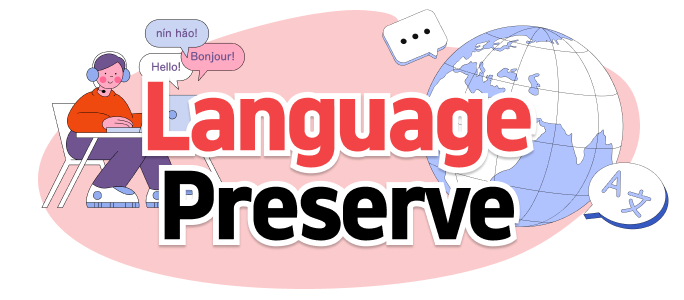Anishinaabemowin Revitalization: Kenny Pheasant's Lifelong Mission
Understanding the significance of preserving Indigenous languages has increasingly become a vital discourse in today’s world. Among these tongues, Anishinaabemowin, the language of the Anishinaabe people, holds a critical place as not just a mode of communication but also as a keeper of cultural heritage and worldview. One person who has dedicated his life to rejuvenating this language is Kenny Pheasant. His journey, which began unexpectedly at a grocery store’s meat counter, is a remarkable testament to the resilience and importance of Indigenous languages.
A Beginning at the Meat Counter
Kenny Pheasant’s foray into teaching Anishinaabemowin began when he was merely 14 years old, unknowingly stepping into the role of a teacher at a local grocery store on Manitoulin Island. In those days, the store was a bustling place during the summer months as tourists flocked to the island. It was here, amidst the humdrum of orders and package wrappings, that Kenny began imparting his language unknowingly. When a customer asked for chicken legs, Kenny responded in Anishinaabemowin: "Ngodwaaswe bakaawenh kaadenhsan," curious but receptive, the customer asked to learn the phrase. This interaction marked the beginning of Kenny’s lifelong commitment to language teaching.
Growing up on Manitoulin Island, Kenny belonged to the Wiikwemkoong First Nation. The language was naturally ingrained in his upbringing. However, Manitoulin’s isolation played a crucial role in preserving the linguistic purity of his upbringing. The island, untouched by the rapid encroachment of English media due to lack of electricity, provided a rare milieu where Anishinaabemowin flourished organically at home. Thus, Kenny’s first encounters with formal English were delayed until his teenage years, when he went to high school on the mainland of Ontario.
An Advocate for Language Preservation
Today, at 68, Kenny Pheasant is a seasoned advocate and educator in Anishinaabemowin. His mission to revive the language shines in his innovative teaching methods, which he employs at various educational settings. These include engaging games like “Concentration,” which helps adults grasp verb usage and less common words by flipping cards and making matches – an effort to transform learning into an interactive and lively experience.
In the basement of the Little River Band of Ottawa Indians’ government building in Manistee, Michigan, a typical class emphasizes that learning isn’t just about memorizing vocabulary but fostering a profound connection to cultural roots. For students like Roger Shalifoe and Andrew Jeurink, this means facing the linguistic complexity head-on, aiding them to rekindle a connection often termed spiritual or holistic. The process is labor-intensive as Anishinaabemowin doesn’t comprise a simplistic linguistic framework but represents intricate structures that offer a new worldview rather than literal translations.
Overcoming Historical Challenges
Reviving Anishinaabemowin isn’t simply an academic undertaking. It also involves navigating a tumultuous history. The story of Kenny’s father exemplifies a generation challenged by oppressive colonial practices. During his time in a Catholic residential school in Ontario, Kenny’s father experienced attempts to erase his language and culture, a struggle many Indigenous people faced. Despite these adversities, he clandestinely preserved his linguistic heritage, teaching it to Kenny and ensuring its transmission.
This tenacity underscores why revitalizing Indigenous languages like Anishinaabemowin is crucial—it isn’t merely about communication. It’s about reclaiming a cultural identity and historical legacy against the odds, akin to reestablishing a balance in an ecosystem as explained by Anton Treuer, an Ojibwe professor.
The Larger Cultural Imperative
The cultural significance embedded in Anishinaabemowin further illustrates why efforts like Kenny’s are invaluable. Krystal Davis, one of Kenny’s students, captures this when she reflects on how the language intertwines with spiritual identity. She emphasizes that certain Anishinaabemowin words resonate deeper than their English translations. These words carry meanings that activate spiritual consciousness, thus embodying more than what straightforward translations can convey.
Moreover, when Krystal experienced her grandmother’s passing, she felt a compelling need to reclaim her linguistic heritage as a tribute and fortifying personal identity. Her determination speaks to broader sentiments in Indigenous communities—a recognition that language and culture are as intertwined as the soul and body.
Remembering Legacies
Anishinaabemowin classes aren’t just about vocabulary; they foster community bonds built on shared heritages. Kenny’s classroom ritual of lighting a candle in memory of Terrie Tyler’ba, his first fluent student, is a poignant reminder that language perpetuates the spirits of those who invested in its future. The candle becomes a metaphor for enduring cultural flames that light the path for new learners, reminiscent of how Terrie’s success story continues to inspire current students.
Kenny acknowledges that his quest is more than pedagogy. It’s spiritual completeness. By mastering Anishinaabemowin, his students embrace their full identities, countering historical fragmentation instituted by oppressive forces.
Looking Towards the Future
Kenny Pheasant’s work stands as a beacon for cultural revivalists. It signifies that languages like Anishinaabemowin are more than mere dialects; they are expressions of existence, encompassing viewpoints deeply rooted in Indigenous philosophies. Yet, the threat to these languages remains at large, urging that actions extend beyond individual classrooms and transformed into broader societal advocacy.
For those involved, Kenny’s teaching journey is transformative. It opens up discussions not just about survival but reclamation, asserting Indigenous presence with every word taught and spoken. Ultimately, Kenny captures the essence of this mission: feeling complete through language, embodying not only its sounds but its spirit and collective memory, marking a counter-narrative to linguistic extinction one class at a time.
출처 : Original Source

